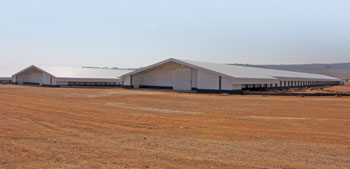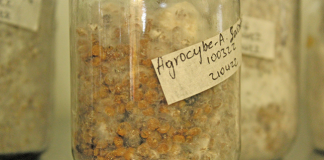
Operational biosecurity is the most critical aspect of the operation for small-scale poultry farmers and is quick, relatively cheap and easy to implement.
Restricted access
Dr Nokuthula Ntseki, Rainbow Farms’ national veterinarian, says that people moving from farm to farm and house to house are the most important factor in disease transmission. “In order to secure the farm environment, access must be controlled and only essential visitors allowed on the farm. They must not have had contact with poultry from other farms.
“Vehicles should be sprayed with a disinfectant before entry and decontamination of equipment and people must be in place. This includes showering and wearing protective clothing.” She advises that within the poultry house, entry and exit must be through a disinfected foot bath. The disinfectant must be diluted at the correct strength for the volume which should be up to the ankle. The dip must not be exposed to sunlight or rain as this will reduce efficacy.
Controlled environment
Controlling the temperature within the poultry house is important as it prevents stress in the birds with a consequent lowering of the immune system. Mycotoxins can also compromise a chicken’s immunity and Dr Ntseki advises that farmers source their feed from a reputable supplier and that feed labels indicate the type of medication included. “Feed must be stored in a rodent-proof, dry area to prevent salmonella contamination and fungal growth.”

Limiting traffic through the farm can play a big role in minimising biosecurity risks.
Dr Ntseki adds that ideal stocking density in open-sided houses must be less than 15 birds/m² as overcrowding limits feeding and drinking space, preventing some birds from accessing vaccines or medication. “Scratches may also result from overcrowding, which can create welfare issues. “Thirsty chickens won’t eat so farmers must ensure that adequate clean water is provided,” says Dr Ntseki. She explains that water can introduce diseases such as avian influenza and salmonella, so if the quality of the water is questionable, disinfectants must be used.
Disease control
“Remove runts, sick and injured birds as they are generally poor performers. They do not respond well to medication and vaccines as they don’t get proper access to water. “If the flock gets exposed to a low dose of infection, these birds are most likely to get ill and will amplify the disease, resulting in a heavy infection load for the rest of the flock,” says Dr Ntseki.
She explains that wild birds and rodents should be discouraged from entering the house as they bring disease and consume food set out for the chickens. One way to do this is to avoid feed spillages outside the house. “Rats consume 10% of their body weight in feed daily, therefore each rat could be consuming between 20g and 40g of feed per day. This translates to 6kg to 12kg of feed per month for every 10 rats,” explains Dr Ntseki.
Bedding
With regards to bedding, wood shavings are preferred, but straw, sunflower husks and other types of bedding can be used if shavings are not available. Bedding, especially shavings, must be dry and free of mould which can cause respiratory tract infections.
Vaccination programme
Any vaccination programme is based on local disease challenges and it is important to consult a local veterinarian regarding current disease status in the area. “Newcastle disease (NCD), infectious bronchitis (IB) and infectious bursal disease (IBD) vaccines are basic requirements for any broiler vaccination programme. “Uniform cover of birds is important as rolling vaccine reaction may occur and unvaccinated birds may amplify disease in case of a mild infection or outbreak,” advises Dr Ntseki.
Farmers can reduce the effect of disease on their farms by purchasing vaccines from a reputable supplier and by making sure that they are handled and stored correctly at all times. Medication must be given according to the instructions of the manufacturer or the veterinarian. After the administration of antibiotics, it is imperative to observe the advised withdrawal period to protect the consumer against exposure to residual antibiotics.
“We are in the business to make money and cannot afford to allow the economic situation to tempt us into cutting corners when it comes to basic issues such as biosecurity. “The cost of putting these measures in place is minimal compared to the potential losses at stake in the event of outbreaks,” says Dr Ntseki.
Keep poultry houses clean
- Manure contains up to 500 million bacteria per gram.
- A building washed with water contains 200 million bacteria per 10m².
- A building washed with a poor disinfectant contains 250 000 bacteria per 10m².
- A building washed and disinfected correctly with a good product contains only 500 to 600 bacteria per 10m².
- Manure can be worked into the vegetable garden to prevent recontamination of the chicken house or it can be covered and composted.
- Spray the inside of the poultry house with a disinfectant.
- All washable equipment such as drinkers, feeders and curtains must be washed and disinfected.
- The drinker lines must be flushed with a descaling agent.
- The longer the resting period of the house after disinfection, the better the chance of preventing disease carry-over from crop to crop.
- The poultry house should be left empty for at least 10 days before repopulation.
Contact Dr Nokuthula Ntseki at Rainbow Farms on 031 242 8500.













